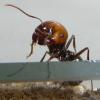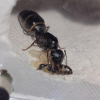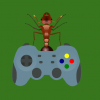So my parents (yes I am 15) don't want me keeping carpenter ants, Camponotus Modoc, to be specific, in the house. I have tried to explain that I won't let them escape their nest, but due to past experiences from when they were kids, they say that they'll dig through the house and destroy it. So I've been wondering, do Camponotus actually dig through dry wood? I know that they will nest in moist wood, but obviously that shouldn't happen in a sound-structured building, like my house. Anyone know anything about that?
- Formiculture.com
- Forums
- Gallery
- Members
- Member Map
- Chat

















